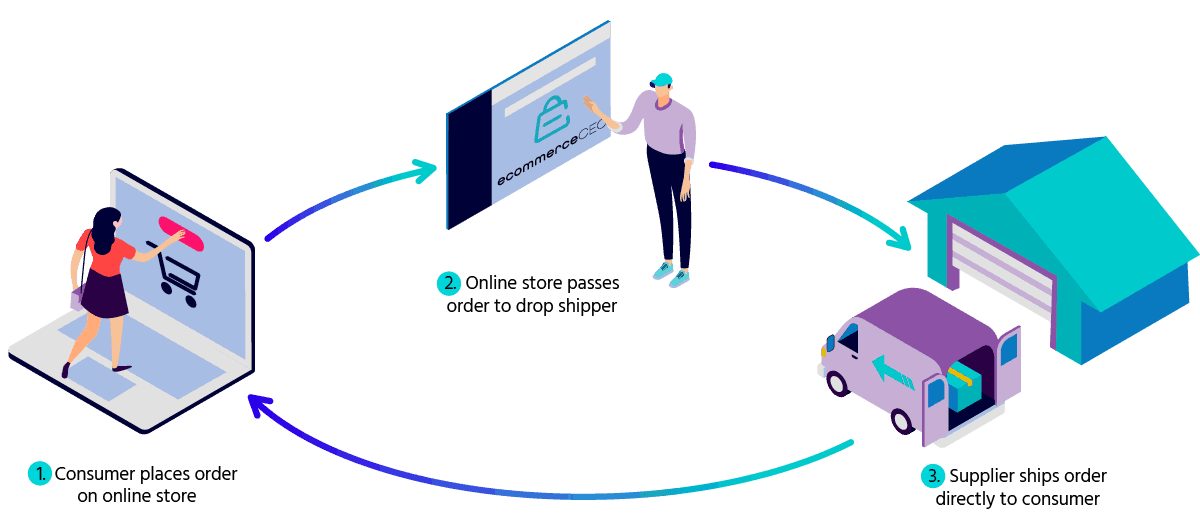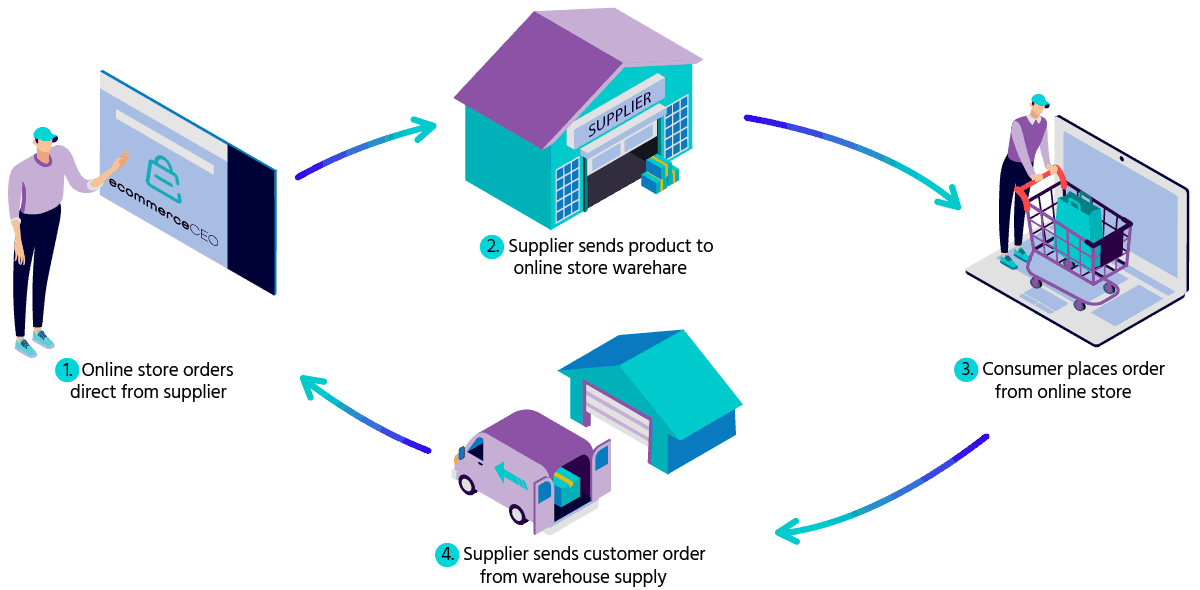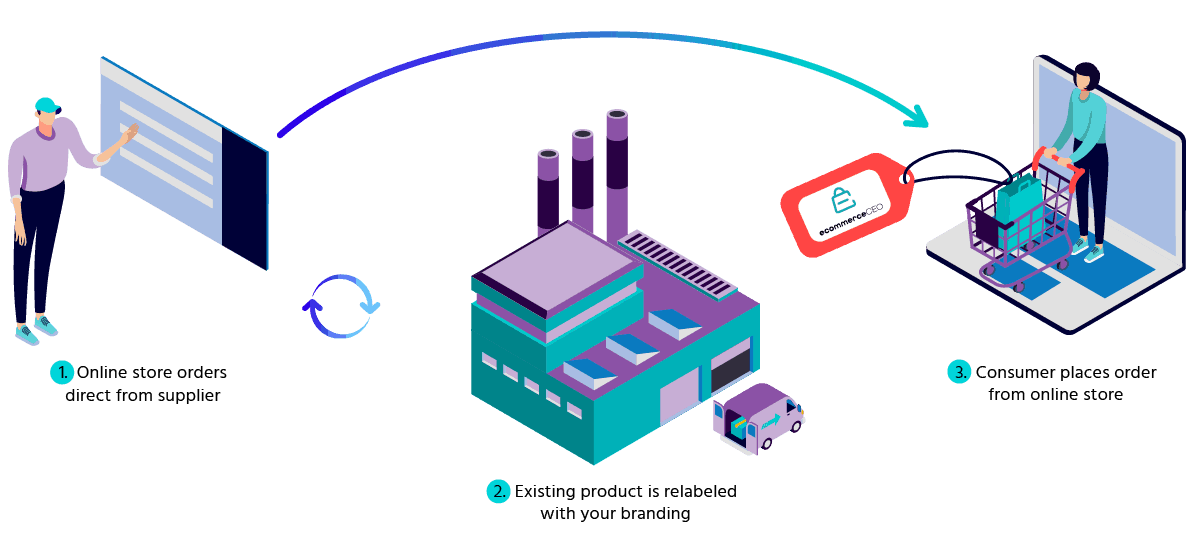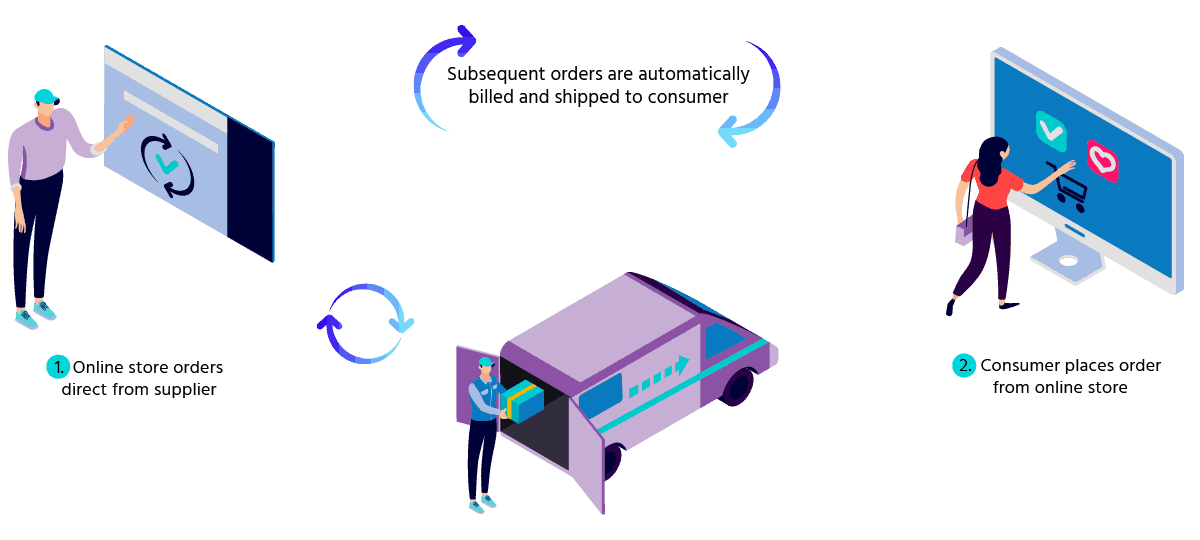Ecommerce Business Revenue Models
Drop Shipping
The simplest form of ecommerce, drop shipping lets you set up a storefront and take the customers’ money. The rest is up to your supplier. This frees you from managing inventory, warehousing stock, or dealing with packaging, but there’s a major caveat.

If your sellers are slow, product quality is lower than expected, or there are problems with the order, it’s on your head (and in your reviews).
Wholesaling And Warehousing
Wholesaling and warehousing ecommerce businesses require a lot of investment at the start – you need to manage inventory and stock, keep track of customer orders and shipping information, and invest in the warehouse space itself.

DollarDays is an online wholesaler with a massive product catalog that includes more than 260,000 products. They employ a key strategy for retailers in this space – by offering case prices AND piece prices, they can sell to the general public and to retailers. This gives them a higher profit margin than a strictly wholesale model.
Private Labeling And Manufacturing
If you’ve got an idea for the perfect product, but don’t have the cash or desire to build your own factory, this might be the right ecommerce business model for you. Companies that manufacture products offsite for sale send the plans or prototypes to a contracted manufacturer who produces the product to meet customer specifications and can either ship directly to the consumer, to a third party such as Amazon, or to the company selling the final product.
On-demand manufacturing allows you to quickly change suppliers if you encounter problems with product quality. The startup costs are minimal, and if you’re interested in potentially opening your own production facilities later, this is a good way to test a new product or concept.
White Labeling
White labeling is similar. You choose a product that is already successfully sold by another company, but offers white label options, design your package and label, and sell the product. This is common in the beauty and wellness industries, but more difficult to encounter in other niches.

One problem with white labeling is demand. You’re stuck with whatever you order, and most of these companies set a minimum production quantity. If you can’t sell it, you’ll have to live with it. Consider this option when you’re willing to work full time on your business and know your product is in demand.
Subscription Ecommerce
One of the most popular and successful pure ecommerce brands is the Dollar Shave Club. Other examples of subscription services include Stitch Fix, Blue Apron, and Nature Box. On the local level, community-supported agriculture boxes are popular.

These ecommerce companies rely on a subscription model that delivers customers a box of products at regular, scheduled intervals. Subscription companies have relatively reliable income streams and can easily incentive customers to purchase additional subscriptions or encourage their contacts to subscribe.
Picking the right products and niches can be difficult. Successful subscription boxes tend to fall into a small handful of product categories: health and grooming, beauty, fashion, and food. Outside of these areas, few subscription companies thrive.